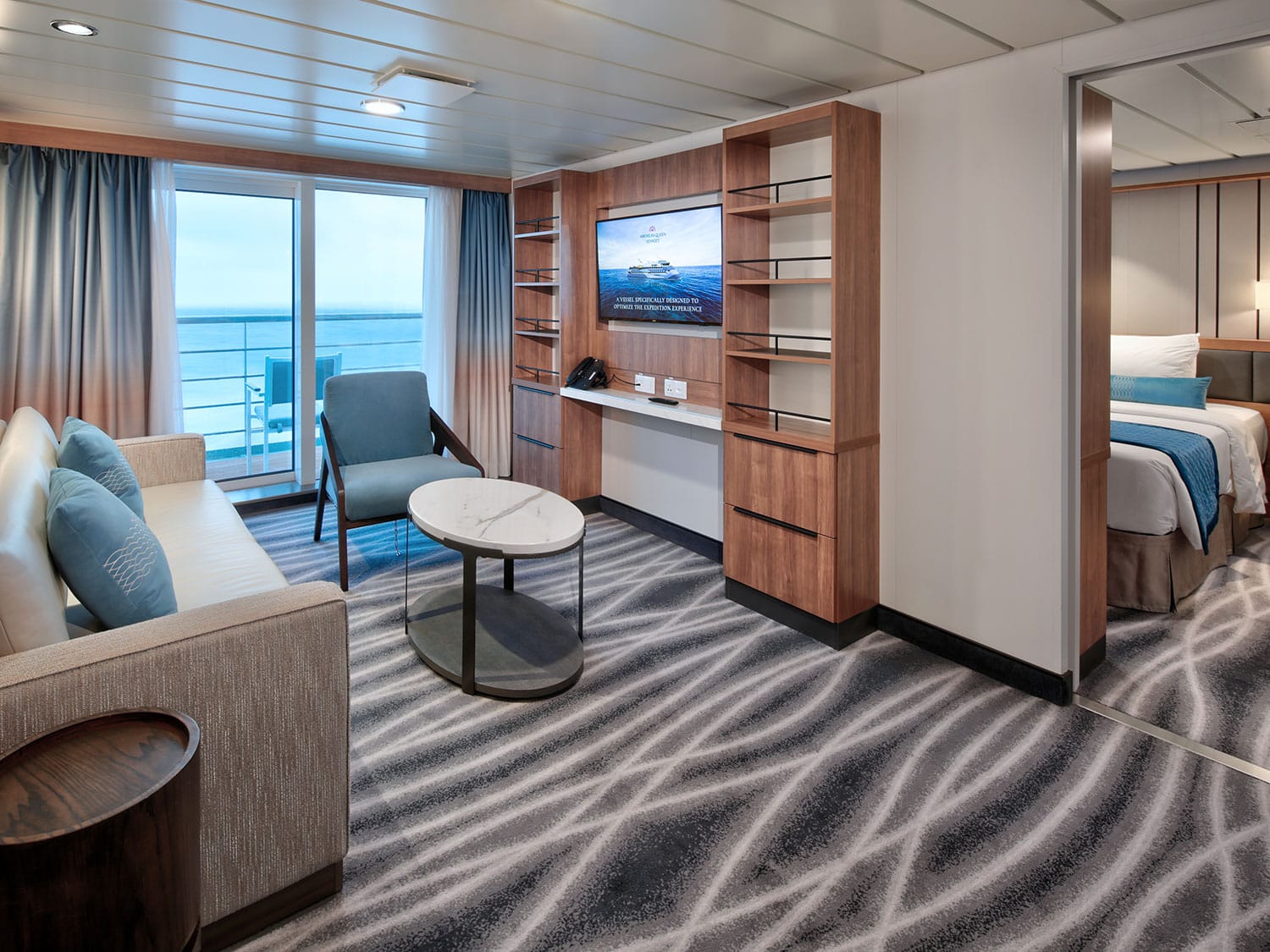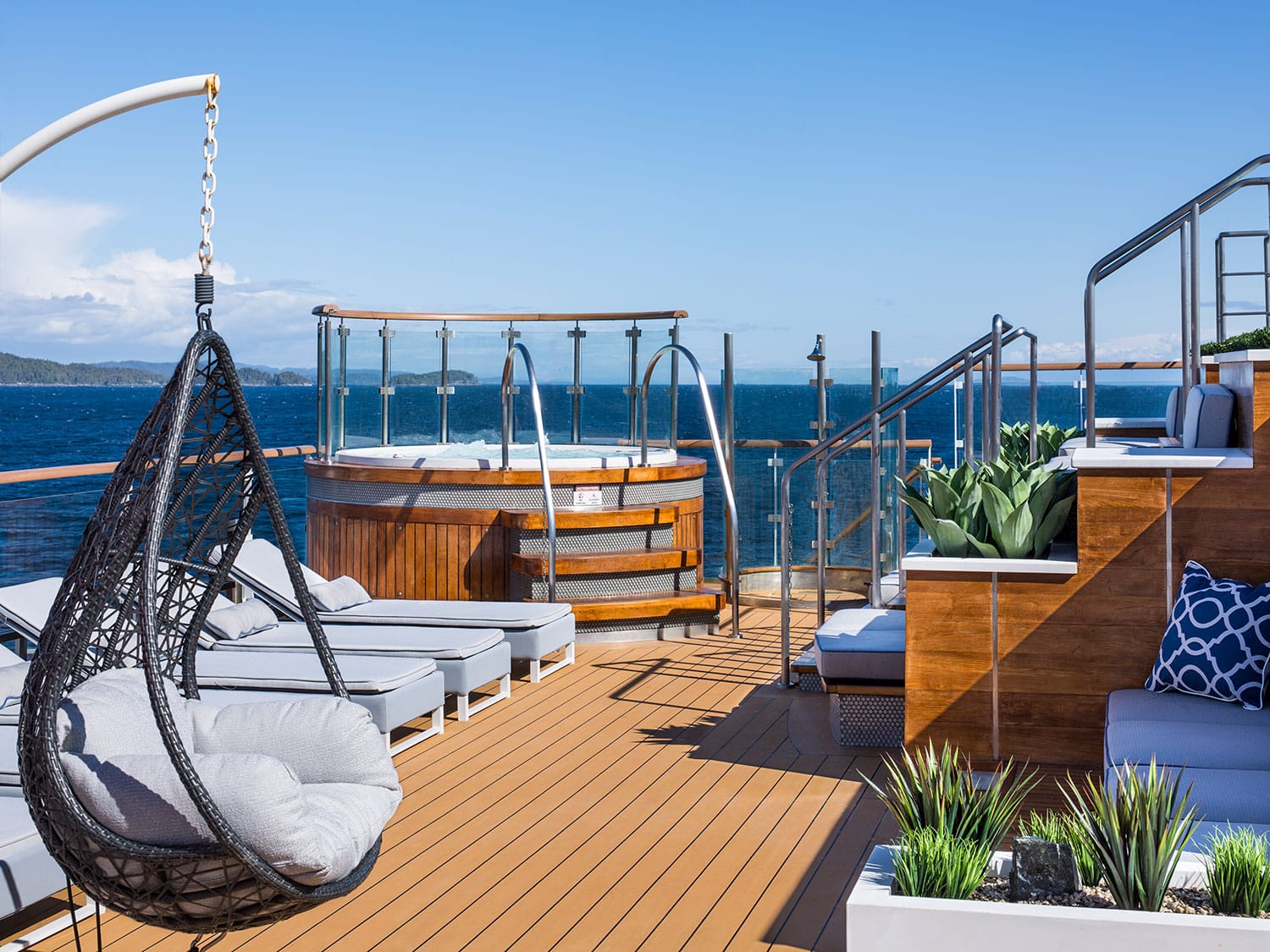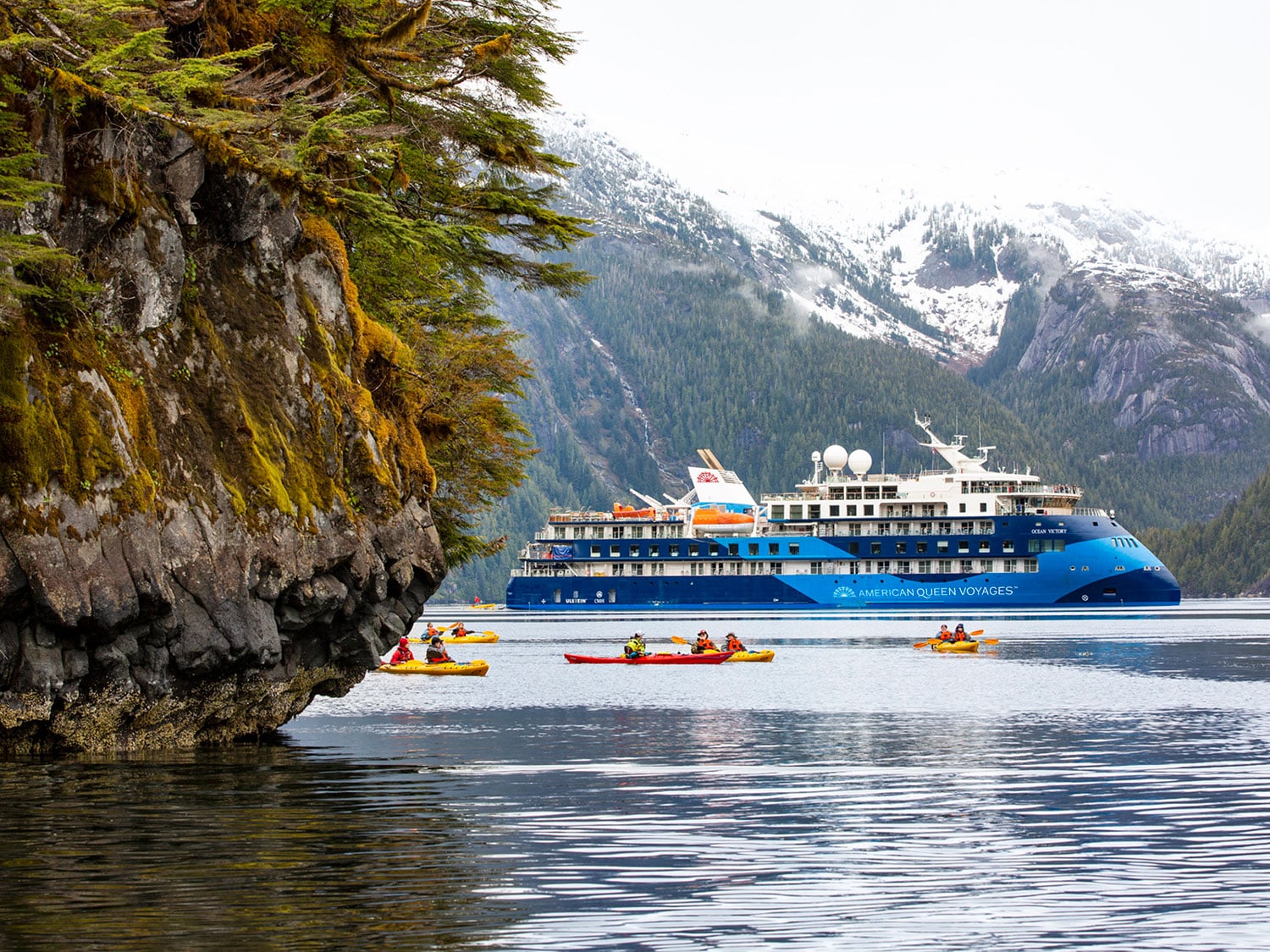Ocean Victory's Mexico And Costa Rica Itinerary Is An Ideal Introduction To Soft Expedition Cruising
This isn’t a typical voyage and the opportunities to experience the adventure doesn’t come along very often.
There's just something about riding on a zodiac that makes you feel alive. As we skipped over the dark water toward the beach of Costa Rica's Playas del Coco, I caught sight of a frigate bird flying overhead, the first time I'd seen one since a trip to the Galapagos in 2007. As we bumped along on the zodiac with the beach getting closer and closer, I turned back to watch Ocean Victory, the small expedition ship I'd spent the last week on, shrink in the horizon.
To be fair, it would be a slight exaggeration to call this 14-night cruise from San Diego, California to San Jose, Costa Rica, expedition sailing—but it's not exactly your average Mexican cruise ship experience, either.
As the first expedition ship to debut from American Queen Voyages, Ocean Victory manages to straddle the line between small ship luxury and intrepid expedition experience. On board, you'll find 93 upscale, comfortable, and very spacious staterooms (most with private balconies), two hot tubs and an infinity pool, a gym and Polar Spa, two restaurants, a barbecue deck, three bars, and an entertainment lounge with live music. There's also a collection of kayaks and zodiacs for water exploration, a water-level observation deck, and some of the most enthusiastic staff you'll meet. (Unfortunately, the ship's kayaks and Polar spa never made an appearance on our sailing, but it's a small price to pay.)

Normally, Ocean Victory runs expedition sailings in Alaska and British Columbia, as well as Patagonia and Antarctica (the latter two are through Albatros Expeditions). The 459-foot vessel was purpose-renovated with an innovative XBow hull designed to navigate through glacial waters with minimal marine disruption and better stabilization. This allows the ship to create nook-and-cranny expedition itineraries that give guests access to places and experiences larger cruise ships just can't reach.
However, twice a year, Ocean Victory heads to the warmer waters off the Pacific coast of Mexico and Costa Rica before it's handed off for its winter season. While these sailings are more akin to a regular cruise—don't expect to drop a kayak in the middle of the ocean—American Queen Voyages stays true to the mission to seek out destinations off the beaten path, picking mostly smaller port towns like Manzanillo, Chiapas, and Huatulco in Mexico, and Playa del Cocos in Costa Rica.
Included tours are available at each port and led by local operators who are genuinely appreciative to have you visit. Locals flash big grins and wave, and proudly share aspects of their culture with the group—we had an entire town shut down their town square for our arrival. Some tour highlights included snorkeling with sea lions in La Paz, hitting the beach in the ultra-charming Huatulco (it's right at the end of the port dock!), tasting your way through every step of the chocolate making process and driving through a local Chiapan village to get to the Mayan ruins of Palenque, and spotting loads of wildlife along the Tempisque River in Costa Rica's Palo Verde National Park.

When not in port, our time was spent having drinks and dolphin-spotting at the top-level Observation Lounge on Deck 8, enjoying afternoon tea snacks, or learning a new skill, like printmaking or playing the nose flute. If you're really lucky, you might find yourself on the back deck battling it out with crew and passengers in a fierce game of cornhole.
As a huge bonus, Ocean Victory's Mexico and Costa Rica sailings still have the Alaska expedition team on board. During our cruise we had daily lectures or presentations given by the ship's expedition staff and local destination experts—a staple of most expedition cruises—schooling us on conservation, biology, culture, and historical topics. We also got to dabble with a few hands-on science experiences, such as crawling for plankton off the side of the ship and checking samples under a microscope.
